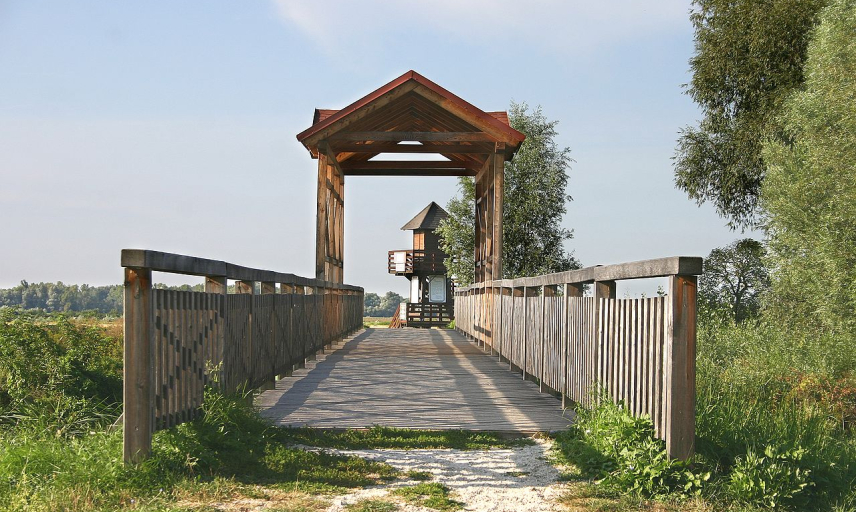
Point of interest- Mosontarcsa - Andau Bridge

The Mosontarcsa Bridge (also known as the Andau Bridge, after the German name of the village) is an old wooden bridge on the Austrian-Hungarian border, which became famous/infamous after the historic events of 1956, when tens of thousands of people crossed it on the main channel of the Hanság, due to its geographical location. The original bridge, which is of mixed memory in Hungary, was blown up by the Soviet occupying forces on 24 November 1956. It was rebuilt in 1996 with the cooperation of Austrians and Hungarians and is now a historical monument.
The bridge is not actually in Mosontarcsa, but 10 km south of the village on the Austrian-Hungarian border. The tradition of its name is probably due to the fact that the nearest settlement to the bridge is Mosontarcsa. The bridge was originally built in the first half of the 1940s by farmers working the land along this border. It was not used for public transport in the traditional sense, but was intended to provide easier access to farmland. It is certain that it was already standing in 1944, because some of the retreating German soldiers left the country via this bridge.
The first time the bridge received more attention was in 1947-1948, although it is understandably difficult to see this in Hungarian history even today, as this was the time of the mass forced deportation of the German population in Hungary. Although a significant part of the German population of the time was transported to the West in an organised way, the atrocities and abuses experienced in the process led to a significant number of people from the area fleeing the forced displacement across the bridge.
After a few years of quieter times for the bridge traffic, the events that have been followed with great international attention have led to the historical image of the bridge as it is today. The suppression of the 1956 revolution forced nearly 200 000 people to flee Hungary, or chose to do so in the hope of a better future. The already strong border police was weakened by the partial loss of the ÁVH forces or by the revolutionary events that diverted them from border guard duty. As a result, the road to the west was briefly opened, offering the population an escape route. According to some estimates, around 70 000 people crossed the Mosontarcsa bridge during this period. The Soviet leadership was of course informed of the event, and on 21 November 1956 Russian troops blew up the bridge. Although it was still possible to cross the remaining ruins of the bridge on foot, the remains of the bridge were destroyed after the establishment of strict border controls.
The rebuilding of the bridge was initiated by the Mosontarca-based Association for International Understanding, and was soon supported by the governments of Austria and Hungary. The bridge was reconstructed on the basis of original documents, using plans by Franz W. Friedrich. The bridge was built by the Austrian army. The timber for the structure was provided by Hungary. The inauguration was timed to commemorate the 40th anniversary of the 1956 Revolution and War of Independence. The ceremony included speeches by the Speaker of the Burgerland Provincial Parliament and the Political State Secretary of the Hungarian Ministry of the Interior (Gábor Világosi) and the cutting of the Austrian and Hungarian national ribbons. The bridge was open to the public, but since Hungary's accession to the Schengen Agreement, it has also been a free border crossing point and a cycle path.
*** Translated with www.DeepL.com/Translator (free version) ***
- Mosontarcsa - Andaui híd
